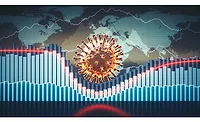2022 Raw Materials and Chemicals Roundtable
What issues are producers and distributors of raw materials and chemicals seeing in their businesses, and how are they coping?
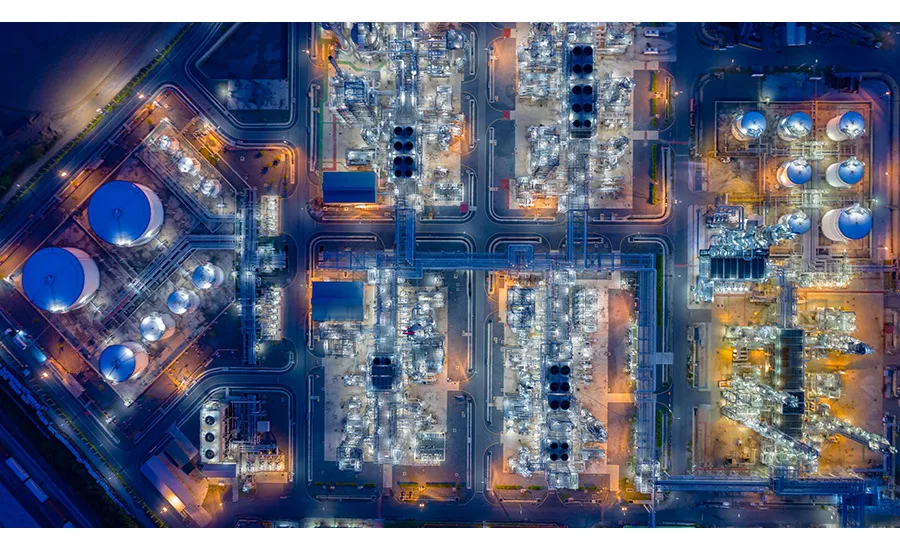
Quick thinking. Open communication. Digital solutions. Streamlined processes. Wide-ranging supply chain issues coupled with the ongoing impact of the COVID-19 pandemic have pushed companies that supply raw materials and chemicals to their limits. But as the old saying goes, necessity is the mother of invention—and players in the adhesives and sealants industry are nothing if not inventive.
What issues are producers and distributors of raw materials and chemicals seeing in their businesses, and how are they coping? Let’s find out.
What is the key lesson learned from 2021 for producers of raw materials and chemicals used in the adhesive/sealant industry?

Sam Brooks, Marketing Director–CASE, Palmer Holland: The global pandemic coupled with states-side weather events led to a supply chain disruption like we’ve never seen before. There were many key lessons learned in inventory and supply chain management. In particular, the pandemic exposed the risks in many industries’ overreliance on the just-in-time approach to inventory management. Additionally, both a significant shift away from sole sourcing and a better balance of domestic vs. offshore sourcing was recognized. Fortunately, Palmer Holland has taken many steps to develop and improve a resilient supply chain strategy along with our suppliers that can handle bumps in the road without crashing.
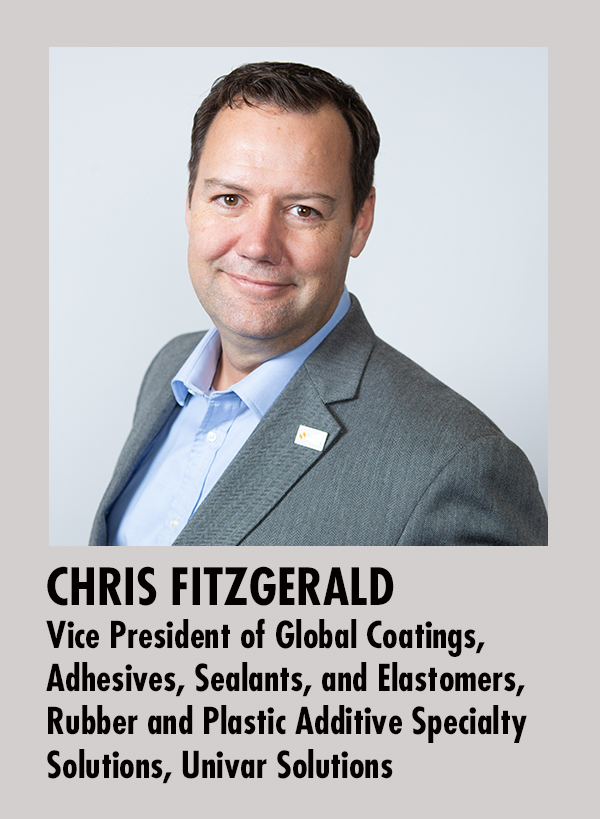
Chris Fitzgerald, Vice President of Global Coatings, Adhesives, Sealants, and Elastomers, Rubber and Plastic Additive Specialty Solutions, Univar Solutions: From the producer side, we witnessed the need for better geographic redundancy and not relying too heavily on one particular production point as the source for key ingredients. Most products in the adhesives and sealants industry, and the CASE industry as a whole, rely on formulations with five, 10, 15, and sometimes more compounds, and often the majority are specialty ingredients. So it’s easy to see how a disruption accessing one ingredient can bring down the whole formulation, which is a huge risk most companies can’t afford to take.
As we look back at 2021, the key learning we’re sharing with our customers is the need for a playbook of solutions they can run depending on what they’re facing down the field. Build out that playbook and have a Plan B or alternative solution ready so that you can keep your plant running and ultimately the end customer and consumer supplied. Everyone has their preferred A-Class option, but there’s also a need to be ready with a “good enough” substitute or alternative option if the A-Class material is unavailable. We can serve as an ally in scoping out alternatives, helping develop a robust product portfolio, and keeping the impact from supply chain disruptions at a minimum.
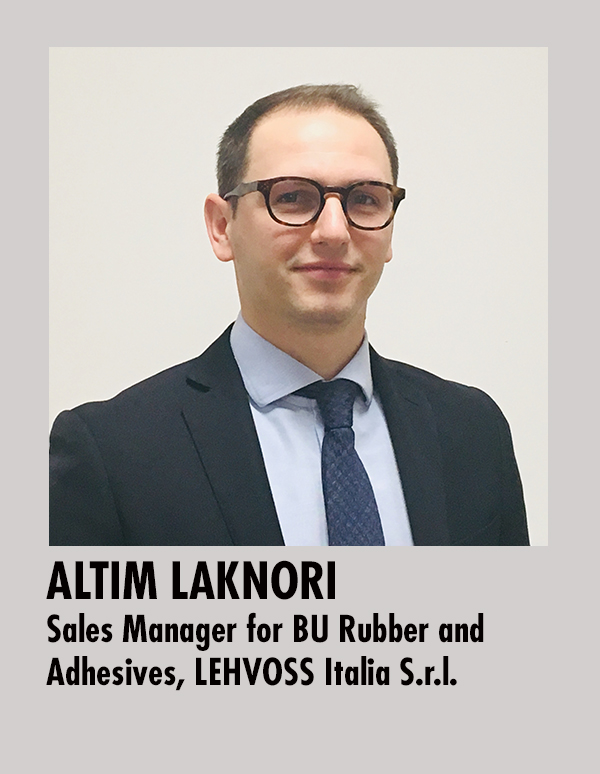
Altim Laknori, Sales Manager for BU Rubber and Adhesives, LEHVOSS Italia S.r.l.: In 2021, the supply chain has been particularly tight for many raw materials and this has caused difficulties in the market. The key lesson that we have learned from 2021 has been the importance of the relationship and clear communication between the supplier, distributor, and customers.

Eric Post, Vice President of Principal Management, Barentz: The key lesson from unprecedented supply challenges last year is that high-quality, timely communication is very important to successfully navigating a turbulent market. As a distributor, we work tirelessly to bring our principals and customers together seamlessly and provide both with real-time business intelligence to help them manage their businesses.
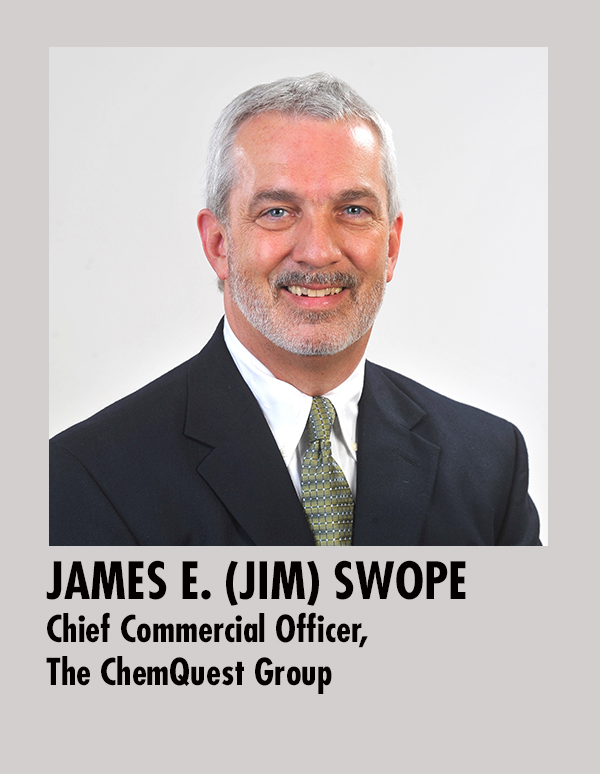
James E. (Jim) Swope, Chief Commercial Officer, The ChemQuest Group: The 80/20 rule, where 80% of your output is caused by 20% of your inputs, is insufficient when managing materials for critical products. Even if you have 99% of your materials secured, that last 1% can keep you from shipping. And it isn’t just the chemicals. Packaging and logistics have been just as challenging (in some cases, more so).
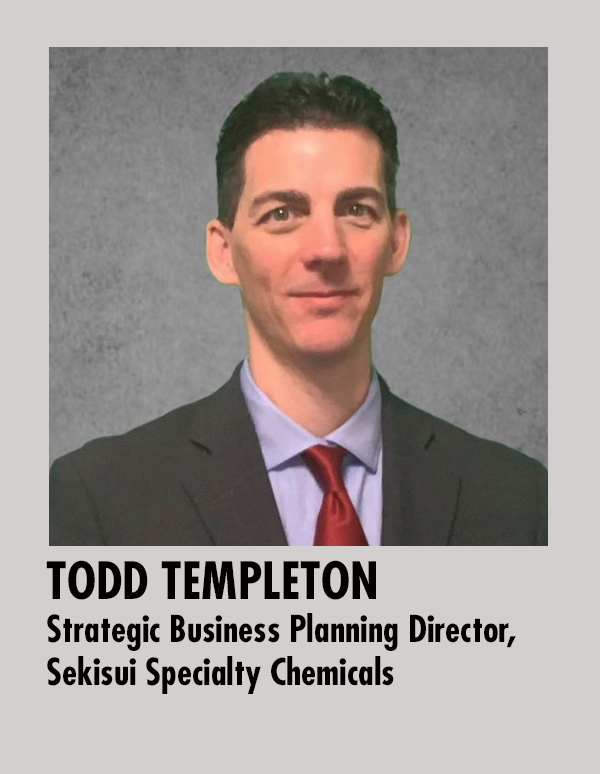
Todd Templeton, Strategic Business Planning Director, Sekisui Specialty Chemicals: A critical lesson that we think many companies are still dealing with and working to resolve is how to de-leverage dependence on long supply chains and focus back to partially sourcing requirements from more local producers of key materials. The last two decades have seen significant growth in global trade as various commodities were “off-shored” to more cost-competitive production markets. The industries that consumed those commodities, here and closer to the end user, then became increasingly dependent on material movements over long distances.
While the benefits of sourcing from lower cost countries helped to keep overall costs down, the long period of relative stability in availability and movement of many global materials looks to have created a false sense of security, with the events of 2021 really bringing to light those challenges and issues. We are a local and domestic producer in our key markets, and we’ve seen customers looking to shift more of their business back to domestic sources in an effort to better balance the risk and uncertainty of long supply chains. Going forward, we expect more and more companies will work to have supply chain risk strategies in place that include aligning more with local production of key inputs.
How is your company dealing with ongoing supply chain issues?
Brooks: Communication, transparency, flexibility, and planning. There are many aspects to the supply chain disruptions that are largely out of our control. We’ve taken a very active role in managing the ongoing disruptions with our customers. Palmer Holland has taken the consultative approach by rolling up our sleeves to help our customers find solutions in this ever-changing environment.
Despite how dire the security of supply environment has proven of late across many of the product spaces that we occupy, our customers remain resilient. They can both manage and plan around bad news. They have no chance at either with no news.
Fitzgerald: The major global events of the past year have served to bring us closer to our supplier partners. Communication and transparency have never been more important, and we’ve worked hard to remain open and accessible to our customers and suppliers regarding our supply chain. Open and transparent communication has allowed us to deepen our relationships with them and demonstrate our value not just as a distributor but as an innovative formulating partner that can help with offsets, as well as a logistics leader that can assist with private fleet transportation, business continuity, and so much more.
Laknori: We are trying to do our best to serve our customers through our stock and trying to give the best price possible in order to help them in this difficult market situation.
Post: At Barentz, we are definitely being more disciplined in selecting reliable supply partners from around the world. We not only review a potential principal’s supply/cost position in a particular chemistry but also make sure that the partners we work with have a similar culture and a commitment to environmental and social responsibility.
Swope: There might be a silver lining in this cloud, in that companies are having very productive conversations with their customers. The best customers and the best suppliers have open lines of communication and very frank conversations about costs, forecasts, potential substitutes, etc.
Templeton: Our team has worked incredibly hard to address these challenges through a combination of approaches that include efforts to digitize and streamline processes, as well as diversifying our supplier and service provider bases to allow for greater flexibility when issues arise. We’ve also invested in our facilities for greater throughput in response to demand levels that are unprecedented in most of the markets we serve.
Particularly in our core polyvinyl alcohol (PVOH or PVA) business, we see continued tightness across the global market as a result of sustained strong demand and challenging supply chain dynamics for material sourced out of Asia. We’ve positioned our business to respond with higher production levels, having ramped capacity up while still constrained by personnel resources.
Looking to the future, Sekisui Specialty Chemicals is well-positioned as a supplier for PVOH in the Western Hemisphere. Our goal will be to continue to grow our own capabilities through debottlenecking and strategic expansion in order to meet the expected growth in our customer base.
From your perspective, have the challenges of the last year impacted the industry’s R&D efforts? If so, how?
Brooks: Yes, the pandemic shifted R&D priorities away from innovation towards finding replacements/offsets for raw materials that either have been impacted by the supply chain disruption in current formulations or have begun to prove cost-prohibitive due to extraordinary inflation our industry has experienced—a level far outpacing that of the average consumer.
We’re encouraging our customers to keep innovation at the forefront moving into 2022. It will become more and more important as the supply chain begins to recover in order to capitalize on growth opportunities.
Fitzgerald: I don’t believe there is a customer out there who hasn’t had to take attention away from R&D and direct it toward other activities like the qualification of alternative materials, quality control measures, or other tasks outside their usual scope due to COVID staffing issues. Finding new ways to get things done has been a true test of the innovation, flexibility, and adaptability of all industries. It’s why as resources like R&D are stretched thin, more customers have turned to independent labs like our CASE lab for vital help with work such as qualifying new ingredients or performing initial testing of new formulations. If the independent lab can prove the “Plan B” formulation can work, it can save hours of R&D time as the customer goes directly to scale-up and into production quicker.
In 2022, we’re optimistic that companies have learned how to operate in their “new normal” and that R&D teams can return to their critical work on the advancements of ingredients, technologies and application development, and testing. Our lab team will be right alongside them, helping customers continue to innovate and grow.
Laknori: From our perspective, the challenges of the last year have impacted the industry’s R&D efforts. Because of the lack of some raw materials and tight supply in the market, many companies have been obliged to change suppliers or homologate alternatives from other suppliers. In some cases where it was not possible to homologate new alternatives, R&D projects have been pushed to study new lines of products.
Post: Yes, definitely a big impact in two ways. First, R&D resources have been shifted to raw material evaluations to qualify second, third, and fourth sources to ensure reliability of the supply chain. Second, our industry has also experienced the “Great Resignation,” and the labor force has been reduced with less technical talent on the bench to tackle R&D efforts. Whichever companies win the race to acquire and retain the best talent will be most successful in the next decade.
Swope: Our contract R&D businesses, ChemQuest Technology Institute and ChemQuest Powder Coating Research, are doing much more substitute evaluation and reformulation work. Our clients’ own labs appear similarly redirected. The end users are also focused on getting their products out the door, and little evaluation of “new” is happening unless it alleviates a supply chain issue.
Templeton: The impact of COVID-19 on overall R&D efforts certainly can’t be ignored. Innovation and R&D really depend on close collaboration both internally and externally with partners on both sides of the supply chain. It’s been said that “Innovation doesn’t happen in a vacuum.” When a global pandemic significantly reduces any organization’s ability to collaborate internally, to brainstorm, to work with customers on ideation and trials, it definitely becomes more challenging to carry out R&D activities in a classical way.
At the same time, organizations have innovated in how they interact, adopting the technologies that facilitate remote interactions and learning to build effective collaboration through these new channels. The overall impact from our perspective is that R&D efforts may have entered a period where they have been slowed by these developments, but in no way have they been stopped.
Our own experience has been much along these lines, with programs aimed at developing new technologies progressing, albeit at a slower pace than desired, particularly when onsite trials are limited by continued need for COVID-19 safety considerations. As we continue to find new ways to safely interact, we fully expect efforts and results to speed up once again.
Additionally, the last year has seen the focus on sustainability and ESG management continue to rise to the forefront, especially as it relates to R&D development. Our parent company, Sekisui Chemical, has deployed its new Vision 2030 “Innovation for the Earth” under which we aim to double our sales by 2030 by doubling the social contributions our products make to people’s lives around the world. Achieving this aim will require significant R&D investment to help create new products and technologies that can address evolving challenges in making lives better everywhere.
What is your company’s outlook for 2022?
Brooks: Many of the experts say supply chain disruptions will continue throughout 2022. We’re just getting better at managing the situation in collaboration with our suppliers in a way that is most helpful and impactful for our customers.
Fitzgerald: Univar Solutions is well-positioned for continued success in 2022 and beyond. There’s so much potential on the horizon for this industry and our customers, including new project work stemming from President Biden’s $1.2 trillion infrastructure bill, the continued adoption and advancement of sustainable products and solutions from our customers and suppliers, and a sense of returning to “normal” (or a “new normal” where the future is bright). And as we continue to move past COVID-19 delays and supply constraints impacting the industry, we know we play an essential part in building this bright future.
Laknori: It seems that 2022 will follow more or less the same path of the last year. We are almost sure that the first semester of 2022 will still have issues in the supply chain and also that energy costs will heavily impact margins through price increases. It is quite hard to prognosticate the second part of the year, but we will give the maximum in our company to help our suppliers and our customers in these challenging times.
Post: Despite the challenges of the last two years, Barentz has continued to invest in all aspects of our specialty chemical distribution business, which has us well-positioned for double-digit growth in 2022. Right out of the gate, supply challenges will continue to dominate our collective workloads, but we expect to see the market conditions equilibrate to a “new normal” in the second half of the year and expect demand to be strong across most markets and raw materials throughout 2022.
Swope: We are fortunate to have a very flexible business that can quickly shift to meet current demands. That said, inflation is going to continue to vex us all, and the underlying upward pressure on energy costs will almost universally impact chemicals. Expectations are that we will need to develop more efficient paths.
Templeton: We expect 2022 to continue to have its share of challenges overall. Our business saw significant production disruptions as a result of the Texas Winter Storm, and we have struggled to restore robustness to our global supply chain.
Even as we worked to catch up from the impact of the storm, the surge in global demand in essentially every market we serve has meant that we have yet to get our business’ inventory position back to something approaching normal. We further expect that the global market for polyvinyl alcohol and many other materials will continue to be tight in 2022. Asian producers have the bulk of global capacity for polyvinyl alcohol, and we expect that high demand and continued logistics challenges means markets that depend on import products will continue to see challenges in supply.
Pricing will continue to be impacted by these new market dynamics in the short term; longer term, they are likely to need to normalize into a new paradigm to encourage the capital investments and expansions critical to meeting future demand. With our production footprint in the U.S. and EU, we believe Sekisui Specialty Chemicals is well-positioned to meet customer needs in 2022 and beyond, and to play a bigger role in helping our customers transition their supply base to one that can ultimately help balance supply chain risk broadly.
Additional information from these companies is available at www.barentz-na.com, https://chemquest.com, www.lehvoss.it, www.palmerholland.com, www.sekisui-sc.com, and www.univarsolutions.com.
Note: Opening image courtesy of pigphoto via www.gettyimages.com.
Looking for a reprint of this article?
From high-res PDFs to custom plaques, order your copy today!




